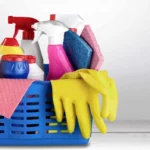Safety within the home is an aspect often overlooked. Yet, it is crucial to our daily lives. With numerous hazards lurking unseen in our households, from fire risks to poisonous substances, awareness of these potential dangers is essential. By understanding the risks and learning how to mitigate them, we can create a safer environment for ourselves and our loved ones.
This guide aims to shine a light on these unseen dangers and offer practical solutions to ensure that your home remains a haven.
Common Unseen Home Dangers
There are a variety of hidden dangers that may exist in your home. These can include:
- Electrical hazards – Faulty wiring, overloaded circuits, and other electrical malfunctions can be major fire risks within the home. Check for any potential issues with your electrical setup from time to time and make sure it is up to date with local codes and regulations.
- Radon – This colorless and odorless gas is a silent killer that can be found in many homes. Radon is the second leading cause of lung cancer, and it is important to take measures to protect yourself and your family from its effects. Using professional radon mitigation services in Longmont can help reduce levels of radon within the home.
- Mold and mildew – These fungi can cause serious health problems if left unchecked. Make sure to check your home for any signs of mold or mildew and take steps to remedy the situation as soon as possible.
- Carbon monoxide – This invisible gas has no smell and can be deadly in large concentrations. Installing carbon monoxide detectors in your home can help alert you to any dangerous levels of gas.
Steps to Take in Safeguarding Your Home
Several steps can be taken to ensure that your home is as safe as possible:
- Have regular inspections – Have an expert inspect your home periodically for electrical, HVAC, plumbing, and other potential hazards.
- Smoke and carbon monoxide detectors – Install smoke and CO2 detectors in your home to alert you to any potential risks.
- Fire safety – Make sure all fire extinguishers are up to date, have working smoke alarms, and practice escape plans for emergencies.
- Clean regularly – Regularly clean your home and check for signs of mold and mildew.
- Secure ladders – Ladders should be kept locked away in a secure location to avoid any potential accidents.
- Lock up hazardous materials – Store hazardous substances, such as cleaning supplies or chemicals, in secure locations out of reach from children or pets.
By following these steps and making sure that your home is safe, you can ensure that you and your family are in the best possible position.
Safe Alternatives to Common Household Items
In addition to taking the necessary safety precautions, you can also opt for safer alternatives to common household items. These can include:
- Natural cleaning products – Instead of using harsh chemical-based cleaners, choose natural alternatives such as vinegar or baking soda.
- Non-toxic paint – Opt for non-toxic paints with low volatile organic compounds (VOCs) for your home.
- Low-VOC furnishings – Furnishings such as carpets, furniture, and flooring can also emit VOCs. Make sure to choose pieces with low levels of VOC emissions whenever possible.
- LED bulbs – LED bulbs use far less energy than traditional ones and produce less heat, which reduces the risk of fire.
By using these alternatives, you can reduce the potential health risks posed by toxic products and create a healthier environment for yourself and your family.
Remember to always be aware of potential risks, regularly inspect your home, practice safety protocols and opt for safer alternatives whenever possible. With these steps in mind, you can make sure that your home is a place where you and your family are safe from harm.
So, stay safe indoors and protect your loved ones! There is no better investment than a safe home.



